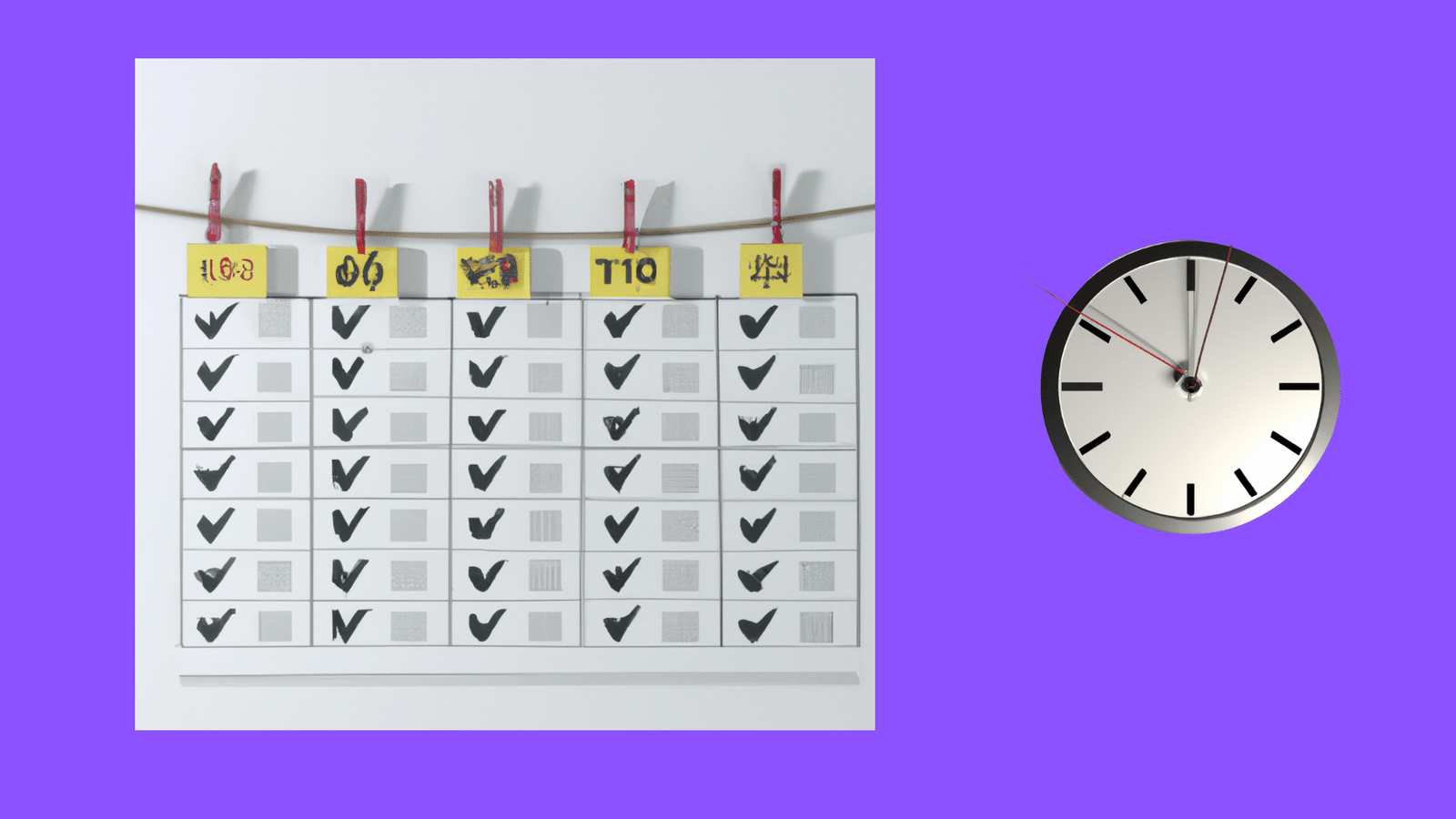Self-Doubt
Self-doubt is a multifaceted psychological phenomenon characterized by a lack of confidence in one’s abilities and judgment. It often originates from various sources, including past experiences, societal pressures, and negative feedback from peers or authority figures. These roots can create a pervasive mindset that undermines an individual’s self-esteem, leading to a cycle of insecurity. Individuals may encounter self-doubt in different areas of their lives, whether it be in professional settings, personal relationships, or even during leisure activities.
The manifestations of self-doubt can be both subtle and overt. For example, an employee might hesitate to share ideas during a meeting due to fear of negative evaluation, while a student might excessively second-guess their exam preparations, ultimately impacting performance. Such behaviors not only decrease productivity but can also exacerbate feelings of inadequacy, creating a barrier to achieving one’s full potential. According to a study conducted by the American Psychological Association, nearly 70% of individuals experience self-doubt at some point, suggesting that this issue is pervasive across diverse demographics.
The psychological impacts of self-doubt are profound. It can lead to increased anxiety, stress, and even depression if left unaddressed. Chronic self-doubt may hinder personal growth and development by preventing individuals from pursuing new opportunities or taking risks. Real-life examples abound, with many successful individuals, including authors and entrepreneurs, recounting their struggles with insecurity despite outward appearances of confidence. These narratives illustrate that overcoming self-doubt is not merely a personal battle but a universal challenge that many will face.
Understanding the complexities surrounding self-doubt is critical. It serves as the first step toward transforming these negative perceptions into healthier, more empowering beliefs. Recognizing its roots and implications allows individuals to begin addressing the fundamental reasons behind their self-doubt, ultimately paving the way for personal growth and greater confidence.
The Negative Impact of Self-Doubt
Self-doubt can have far-reaching consequences, significantly affecting various aspects of one’s life. It often leads to a decline in mental health, fostering feelings of anxiety, depression, and low self-esteem. Individuals who grapple with self-doubt frequently find themselves trapped in a cycle of negative thinking, where they question their abilities and worth. This incessant questioning not only drains their emotional energy but also creates a pervasive sense of fear that hinders personal growth and self-improvement.
In personal relationships, self-doubt can manifest as insecurity, leading to communication barriers and increased conflict. Individuals may fear rejection, which can cause them to withdraw from social interactions or avoid expressing their true feelings. This hesitance can strain relationships with friends, family, and romantic partners, resulting in isolation and loneliness. Consequently, the lack of support systems exacerbates feelings of doubt, reinforcing a negative self-image and perpetuating the cycle of insecurity.
Professionally, self-doubt can derail one’s career trajectory. Fear of failure often leads to missed opportunities, whether in the form of avoiding promotions, speaking up in meetings, or taking on challenging projects. Decision-making becomes clouded, as individuals are paralyzed by the fear of making the wrong choice. This hesitation can hinder goal achievement, while simultaneously causing individuals to overlook their strengths and capabilities. Over time, the cumulative effects of self-doubt can create a detrimental cycle, causing stagnation in both personal and professional realms.
Recognizing the insidious impact of self-doubt is crucial for breaking free from its grip. Understanding how it affects mental health, relationships, and professional aspirations can serve as a catalyst for positive change, encouraging individuals to confront their doubts and rebuild their confidence. When self-doubt is acknowledged, steps can be taken to mitigate its effects, paving the way to greater self-belief and fulfillment.
The Importance of Self-Awareness
Self-awareness plays a pivotal role in overcoming self-doubt and fostering a strong belief in oneself. By recognizing the existence of self-doubt and understanding its underlying triggers, individuals can navigate their thoughts and emotions more effectively, leading to empowerment and resilience. The process of self-awareness involves not only acknowledging these doubts but also reflecting on the circumstances that give rise to them. This is essential for personal growth and transforming one’s mindset.
One effective technique to enhance self-awareness is journaling. By regularly writing down thoughts, feelings, and experiences, individuals can identify patterns in their self-doubt and the situations that provoke such feelings. Journaling allows for a structured means to explore insecurities, making it easier to unravel complex emotions and build clarity around them. It can serve as an accountability tool, encouraging honest introspection and reinforcing the boundaries of one’s self-perception.
Moreover, mindfulness practices significantly contribute to self-awareness. Engaging in activities such as meditation or deep-breathing exercises facilitates a presence in the moment, allowing individuals to observe their thought patterns without judgment. This non-reactive observation enables a deeper understanding of personal triggers for self-doubt, paving the way for healthier responses to challenging situations. Mindfulness cultivates emotional regulation, which is crucial for reframing negative self-talk into more positive affirmations.
Additionally, self-reflection is a vital method to confront and understand personal doubts. Taking time to analyze past experiences and how they influence current beliefs can shed light on reluctant feelings. It can illuminate the origins of self-doubt, helping individuals separate factual evidence from exaggerated perceptions. Through these practices, self-awareness not only becomes a tool for identifying self-doubt but also serves as a foundation for establishing unshakable self-belief.
Mindset Shifts for Confidence
Transforming self-doubt into unwavering confidence requires intentional mindset shifts. Cognitive reframing, a psychological technique, entails altering the lens through which we view our thoughts and experiences. By recognizing negative patterns and replacing them with positive alternatives, individuals can foster an environment conducive to self-belief. This practice encourages one to embrace challenges as opportunities for growth, rather than obstacles to security.
One effective strategy for developing a growth mindset is to keep a journal dedicated to self-reflection. Writing about daily experiences can help identify moments of self-doubt and facilitate cognitive reframing. For instance, reflecting on a challenging situation, a person might initially perceive it as a failure. However, by reframing this perception to focus on the lessons learned and the skills developed, the individual cultivates confidence and resilience. This practice not only enhances self-awareness but also reinforces the notion that setbacks are temporary and often the precursor to success.
Incorporating positive affirmations into daily routines is another powerful technique for shifting one’s mindset. By articulating strong, affirming statements about oneself, individuals can counteract negative self-talk and instill a sense of assurance. Repeating phrases such as “I am capable of overcoming challenges” or “I have the skills necessary for success” can reinforce a confident self-image. It is essential, however, to ensure that these affirmations resonate personally, as the effectiveness of positive thinking strategies is greatly enhanced when they reflect genuine beliefs.
Additionally, engaging in visualization exercises can significantly aid in reinforcing confidence. By envisioning oneself succeeding in specific endeavors, individuals create a mental representation of accomplishment, reducing anxiety and doubt. This mental rehearsal prepares one to tackle real-life challenges with renewed confidence and perspective. Thus, through cognitive reframing, positive affirmations, and visualization, anyone can effectively shift their mindset from self-doubt to unwavering belief in their capabilities.
Setting Realistic Goals
Goal-setting is a fundamental aspect of personal development, particularly in the journey from self-doubt to confidence. Establishing goals provides a clear direction, allowing individuals to focus their efforts and track progress over time. When goals are structured appropriately, they reduce the feelings of overwhelm that can accompany self-doubt, fostering a stronger sense of accomplishment.
To effectively diminish self-doubt, it is essential to set goals that are both achievable and challenging. The SMART framework serves as an excellent guideline for this purpose. SMART stands for Specific, Measurable, Achievable, Relevant, and Time-bound. By using this method, individuals can create clearly defined objectives tailored to their current skills and capabilities, ensuring they are realistic yet still encourage personal growth.
Specific goals delineate what exactly one aims to achieve. A goal like “improve public speaking skills” is vague. Instead, expressing it as “deliver a five-minute presentation at the next team meeting” is much clearer. Measurable goals allow individuals to gauge their progress, such as committing to practice public speaking for at least one hour each week. Achievable goals ensure that the ambitions set are realistic; asking oneself whether the goal can feasibly be achieved with available resources is crucial. Relevant goals align with one’s broader life aspirations, connecting daily efforts to long-term success. Finally, Time-bound goals introduce a sense of urgency, motivating individuals to act within a specified timeframe.
By incorporating the SMART framework into goal-setting practices, individuals can establish a robust foundation for enhancing self-belief. Each goal reached not only provides a sense of accomplishment but also reinforces the message that they are capable of overcoming self-doubt. By celebrating these milestones, one can transform the narrative of self-doubt into one of unwavering confidence.
Building a Support System
A solid support system is crucial for individuals striving to overcome self-doubt and foster unshakable belief in their abilities. The reinforcement of positive beliefs often comes from peers, mentors, and communities that provide encouragement during challenging times. These relationships create a fertile ground for personal growth, as they serve to remind individuals of their strengths and capabilities. The influence of these connections can be profound, transforming feelings of insecurity into a belief in one’s potential.
Mentors, in particular, play a pivotal role in this transformative journey. Their experience often provides invaluable insights that can guide individuals away from doubts and foster a constructive mindset. A mentor can offer personalized advice, share their own experiences of overcoming self-doubt, and instill resilience in those they guide. The outcomes of such relationships can significantly enhance one’s confidence, as they create a safe space for dialogue and reflection.
Friends, too, are instrumental in developing a robust support network. A close friend can provide encouragement when self-doubt creeps in, reminding you of your achievements and potential. This constant affirmation can help to mitigate negative thoughts, making it easier to acknowledge individual strengths. Additionally, cultivating a supportive community can further reinforce these positive messages. Engaging with groups that share similar experiences or goals fosters a sense of belonging, reducing isolation and promoting open discussions about self-doubt and strategies to combat it.
To cultivate a supportive environment, actively seek out and nurture relationships that uplift you. Join clubs or groups aligned with your interests, attend workshops, or participate in online communities that focus on empowerment and personal growth. By surrounding yourself with like-minded individuals, you create a dynamic atmosphere that bolsters your confidence and encourages personal development. This interconnectedness serves as a formidable defense against self-doubt and reinforces a belief in your abilities.
Practicing Self-Compassion
Self-compassion is a vital concept that serves as an effective antidote to self-doubt. At its core, self-compassion involves treating oneself with the same kindness and understanding that one would offer to a friend in times of struggle. This practice enables individuals to mitigate negative thoughts and emotional turmoil, fostering a sense of resilience. Acknowledging that everyone experiences challenges can profoundly alter one’s perspective, transitioning from self-criticism to self-support.
To cultivate self-compassion, it is essential to adopt specific techniques that reinforce a nurturing mindset. One effective method is the use of self-affirmations. These positive statements can help reshape one’s inner dialogue, transforming critical thoughts into supportive messages. For instance, affirmations such as “I am enough” or “I deserve kindness” can initiate a shift toward a more constructive self-view. Incorporating these affirmations into daily routines, such as during morning reflections or evening journaling, may significantly enhance one’s self-image and reduce feelings of inadequacy.
Alongside self-affirmations, implementing self-care practices can further fortify self-compassion. Engaging in activities that promote physical, emotional, and mental well-being is crucial. This might include mindfulness meditation, which has been shown to encourage self-awareness and acceptance, or dedicating time to hobbies that bring joy and relaxation. The act of prioritizing one’s needs fosters a deeper connection with oneself, reinforcing the understanding that personal well-being is essential for tackling life’s challenges.
Incorporating self-compassion into one’s daily life not only mitigates self-doubt, but it also empowers individuals to approach difficulties with a sense of grace and resilience. By recognizing the human experience and extending kindness toward oneself, the journey from doubt to unshakable belief becomes more attainable, allowing for personal growth and development.
Taking Action: Step by Step
Taking deliberate action is critical in the journey from self-doubt to confidence. To initiate this transformative process, one can start by breaking down goals into manageable steps. This practice allows an individual to embrace a gradual approach, preventing overwhelm and fostering a sense of achievement with each completed task. Begin with setting specific, attainable goals that align with personal values and aspirations, ensuring they are realistic to encourage the momentum needed for growth.
Once the goals are established, it is essential to cultivate a habit of taking small, consistent actions. This approach not only helps to build confidence over time but also reinforces the belief that progress is achievable. Celebrating small successes along the way is equally important, as it creates a positive feedback loop that bolsters self-esteem. Acknowledging even minor accomplishments can help to shift the focus from self-doubt to capabilities, creating a more empowering mindset.
Furthermore, it is crucial to recognize that failure is an integral part of the growth process. Embracing setbacks as learning opportunities rather than signs of inadequacy can significantly alter one’s perspective. Each misstep offers invaluable insights that can guide future efforts, thus reinforcing the notion that progress often entails trial and error. Additionally, developing strategies to combat procrastination can be beneficial. Techniques such as breaking projects into smaller tasks, setting deadlines, and eliminating distractions can help to overcome the inertia that often accompanies self-doubt.
In summation, the pathway from self-doubt to confidence is paved with proactive actions. By starting small, celebrating victories, and viewing failures as lessons, individuals can build a resilient belief in themselves. Taking consistent steps, despite the fear that may arise, ultimately leads to unshakable confidence.
Celebrating Progress and Building Momentum
Recognizing and celebrating progress is a fundamental aspect of transforming self-doubt into unshakable belief. When individuals acknowledge their achievements, they create a positive reinforcement loop, which is essential for building lasting confidence. The notion of celebrating progress does not require monumental achievements; even the smallest victories contribute significantly to self-recognition and promote an upward trajectory in personal growth.
To cultivate a habit of acknowledgment, individuals can establish a daily or weekly practice of reflection. This can involve journaling about accomplishments, whether big or small, such as completing a challenging task, learning a new skill, or simply overcoming a day filled with doubt. Writing down these achievements not only helps in recognizing progress but also provides a tangible reminder that one is moving forward. This practice of self-reflection reinforces the belief that effort leads to growth, thereby enhancing self-esteem and reducing anxiety about future tasks.
Moreover, sharing successes with others can amplify the celebration of progress. Whether through informal conversations with friends, discussions within professional networks, or even on social media platforms, sharing achievements fosters a supportive environment. This communal aspect of progress not only reinforces personal belief but also encourages others to recognize their own achievements. Such shared encouragement can generate a momentum that propels individuals towards greater aspirations and successes.
Establishing a routine that incorporates celebratory practices will further enhance this momentum. This routine could involve setting regular milestones, rewarding oneself for reaching them, or engaging in activities that bring joy and fulfillment. Through this consistent practice, individuals can gradually build a reservoir of self-belief, allowing them to face new challenges with greater confidence. As individuals continue to celebrate their progress, they weave a fabric of unshakable belief that empowers them to navigate life with resilience and assurance.







